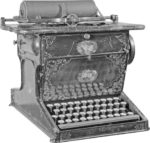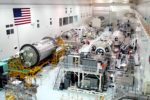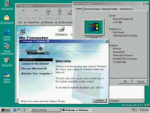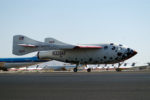A new way to listen to music is announced, Microsoft makes a shady offer and the first privately funded spaceplane takes off… It all happened This Week in Tech History.
This week in 1868 – American inventor Christopher Sholes patented the Sholes and Glidden typewriter. This was the first commercially successful typewriter – and the first to introduce the QWERTY keyboard, as opposed to an alphabetic layout. After several short-lived attempts to manufacture the device, the machine was acquired by E. Remington and Sons in early 1873. Remington, a firearms manufacturer further refined the typewriter before finally placing it on the market on July 1, 1874. The Sholes and Glidden could print only upper-case letters and was a “blind writer”, meaning the typist could not see what was being written as it was entered.
1948 – Columbia Records announced that it was offering a new Vinylite long-playing record that could hold 23 minutes of music on each side. One of the first LPs produced was of the original cast recording of the Broadway show, “South Pacific”. Critics quickly scoffed at the notion of LPs, since those heavy, breakable, 10-inch, 78 RPM disks with one song on each side, were selling at an all-time high. It didn’t take very long though, for the 33-1/3 RPM album — and its 7-inch, 45 RPM cousin to revolutionize the music industry and the record buying habits of millions.
1994 – NASA’s Space Station Processing Facility, a new state-of-the-art manufacturing building for the International Space Station, officially opened at Kennedy Space Center. After the completion of the ISS in 2011, the factory was dormant for several months until early 2012, when the building was slightly refurbished for the moving in of space companies such as SpaceX to manufacture, process and load-up spacecraft such as Dragon and on-board payloads.
1995 – Microsoft and Netscape officials met at Netscape headquarters in Mountain View, Calif. Notes taken by Netscape co-founder Marc Andreessen indicate that Microsoft offered to buy a share of its rival if Netscape would stop making Navigator for the Windows market. The Andreessen notes would be used later in the U.S. government’s massive antitrust case against Microsoft.
1998 – Windows 98 was released. Microsoft used the slogan, “Works better. Plays better.” The company said the new operating system would bring an “increased computer experience by providing a rich feature set for a wider variety of users than ever before.” Interest in the new release was also increased by the publicity generated by the U.S. Justice Department’s antitrust suit against Microsoft.
And this week in 2004 – SpaceShipOne lifted off from the Mojave Desert in the initial stage of the first attempted commercial space flight. The aircraft was designed by aerospace designer Burt Rutan, built with more than $20 million in funding by billionaire Microsoft Co-founder Paul Allen, and was piloted by Michael Melvill. SpaceShipOne reached an altitude of more than 62 miles.







